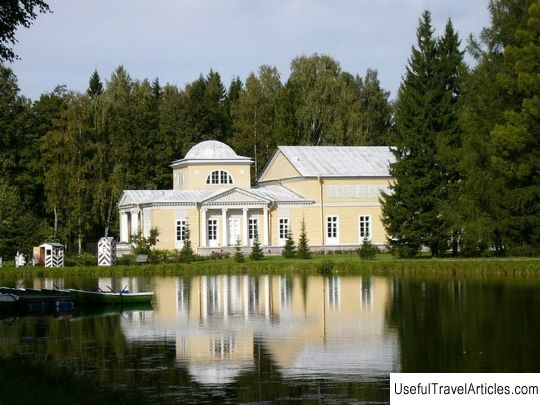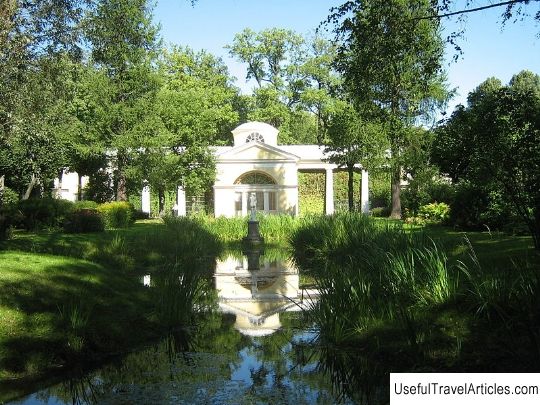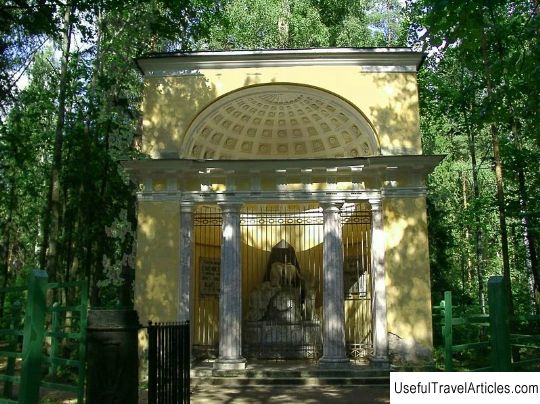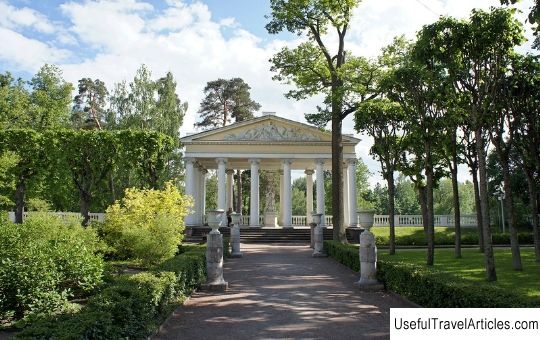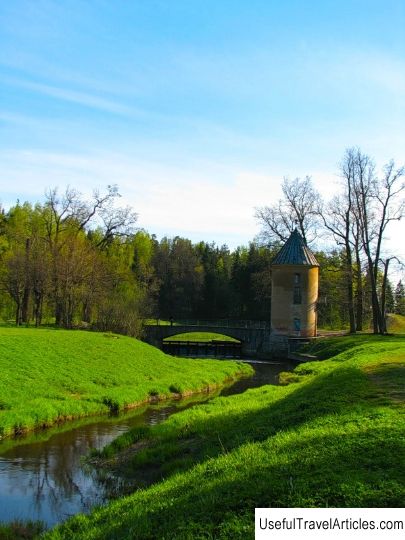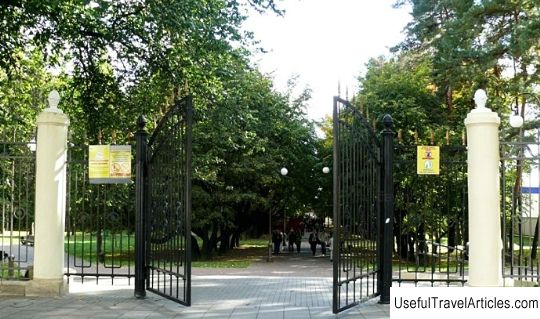Pink Pavilion in Pavlovsky Park description and photos - Russia - St. Petersburg: Pavlovsk
Rating: 8,7/10 (201 votes) Pink Pavilion in Pavlovsky Park description and photos - Russia - St. Petersburg: Pavlovsk. Detailed information about the attraction. Description, photos and a map showing the nearest significant objects. Photo and descriptionThe Pink Pavilion or the Rose Pavilion is one of the most charming pavilions of the Pavlovsky Park ensemble, which is of significant artistic and historical value as a rare example of classic wooden architecture. The author of the project of the Pink Pavilion is Andrey Voronikhin. Later, Pietro Gonzago and Carl Rossi also worked here. The pink pavilion is located at the junction of three districts of Pavlovsky Park: White Birch, Staraya Sylvia and Parade Field. That is why it plays an essential role in creating the overall landscape of the park, as if completing its artistic appearance. In 1797, a piece of land "near the Parade Field" was granted by Empress Maria Feodorovna to the prince, privy councilor, prosecutor general of the Department of Appanages, chamberlain, Chevalier of various orders Alexei Borisovich Kurakin, for the construction of a country house. It is the house of A.B. Kurakina was located on the site of the Pink Pavilion. It was rectangular in plan with porticoes on four sides and was made of wood. In 1806, the plot with the house and services was sold by the prince to the military governor of the city of Pavlovsk, Peter Ivanovich Bagration, who was responsible for the safety of the royal family when the Court went to Pavlovsk for the summer. Bagration also acquired a neighboring plot, which belonged to Prince M.P. Golitsyn. Who was the author of the project of alterations of Kurakin's house is unknown. The construction was carried out by the merchant of the 3rd guild, Andrei Pelevin. Going into the army in December 1810, Bagration ordered Pelevin to sell his Pavlovsk real estate. And that was done. In 1811, the plots became the property of the treasury of Empress Maria Feodorovna. But the memory of the former owner remained in the name of this site for a long time. It was called that way "Bagration's dacha". Andrey Voronikhin, on behalf of the empress, converted this house into a park pavilion. According to Maria Feodorovna's idea, the pavilion was supposed to be the kingdom of roses - her favorite flowers. Roses adorned furniture specially created for him and the design of the pavilion's interiors; roses were also on the porcelain service and in the rose garden laid out near the walls of the pavilion. Flowers were brought from different parts of Europe. The Empress loved and understood them. But he showed a special passion for roses. Therefore, the park pavilion was named Pink. In 1812, a gilded French inscription “Pavillon des roses” appeared on the pediment of the building's main facade. When, on July 27, 1814, Pavlovsk met Alexander I and the Russian Guard, which returned from Paris with a victory over Napoleon, a dance hall was hastily added to the Pink Pavilion. The construction work was supervised by the architect K. Rossi and the decorator P. Gonzago. In addition, a dock with wooden railings was set up next to the Rose Pavilion on the "fishing pond". And at the Pavilion of the Roses were installed copper statues of Hercules, sitting on a horse, and Apollo of Herculaneus. Today, the reconstructed Rose Pavilion serves as a concert hall. The best musical project carried out within its walls is the “Big Waltz in Pavlovsk” festival, held annually since 2002. The festival is dedicated to the composer Johann Strauss. Over time, the festival went far beyond Pavlovsk and became an inter-museum project, received the broader name "Big Waltz". Another music festival held in the Pink Pavilion is dedicated to the composer Mikhail Glinka. Thus, the traditions that were once laid by the royal mistress of Pavlovsk, Maria Fedorovna, are honored and continued.     We also recommend reading Trinity Cathedral of the Life-Giving description and photo - Russia - Far East: Petropavlovsk-Kamchatsky Topic: Pink Pavilion in Pavlovsky Park description and photos - Russia - St. Petersburg: Pavlovsk. |
